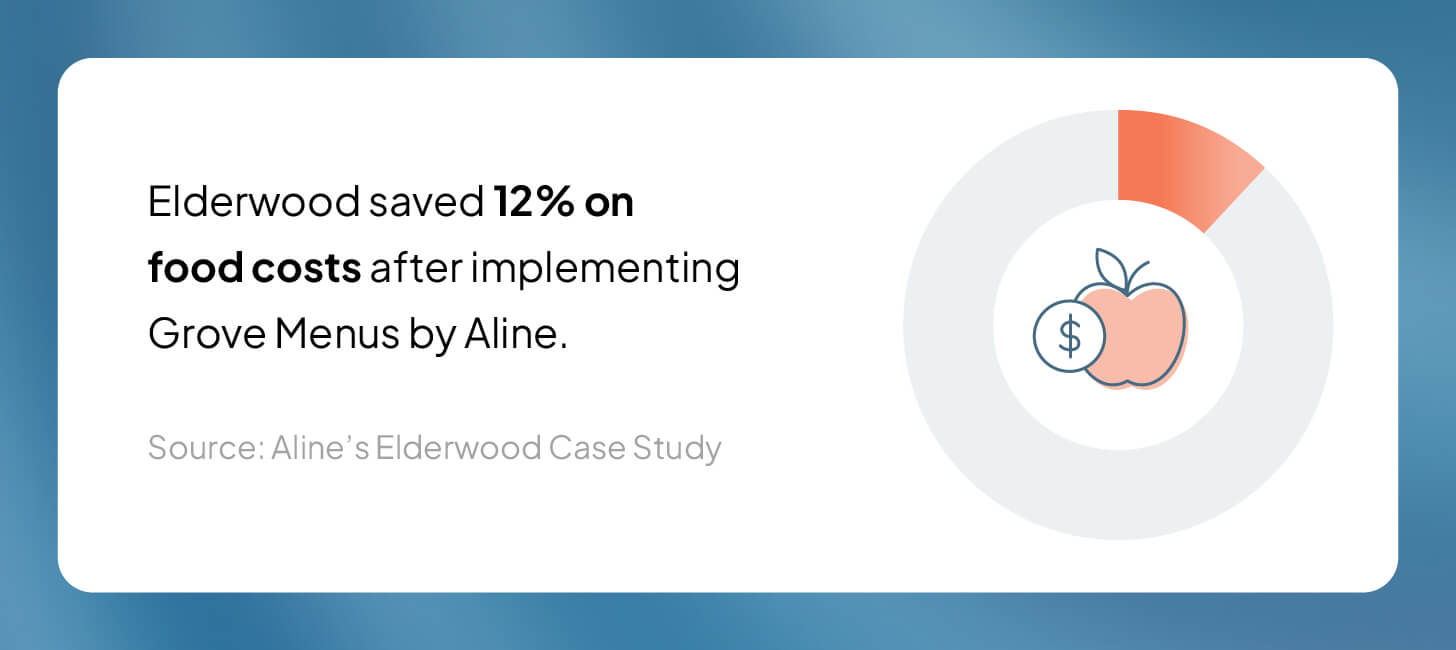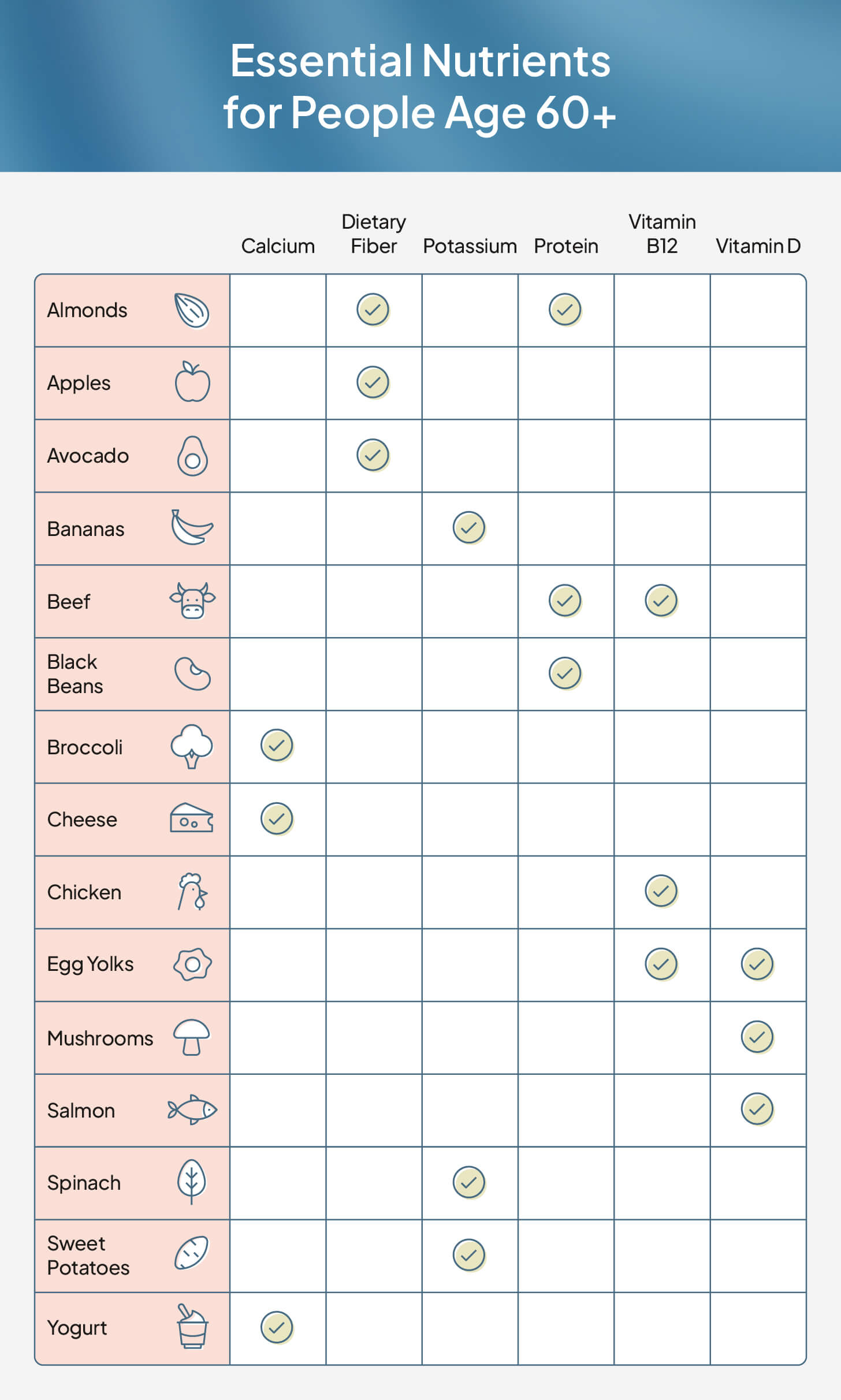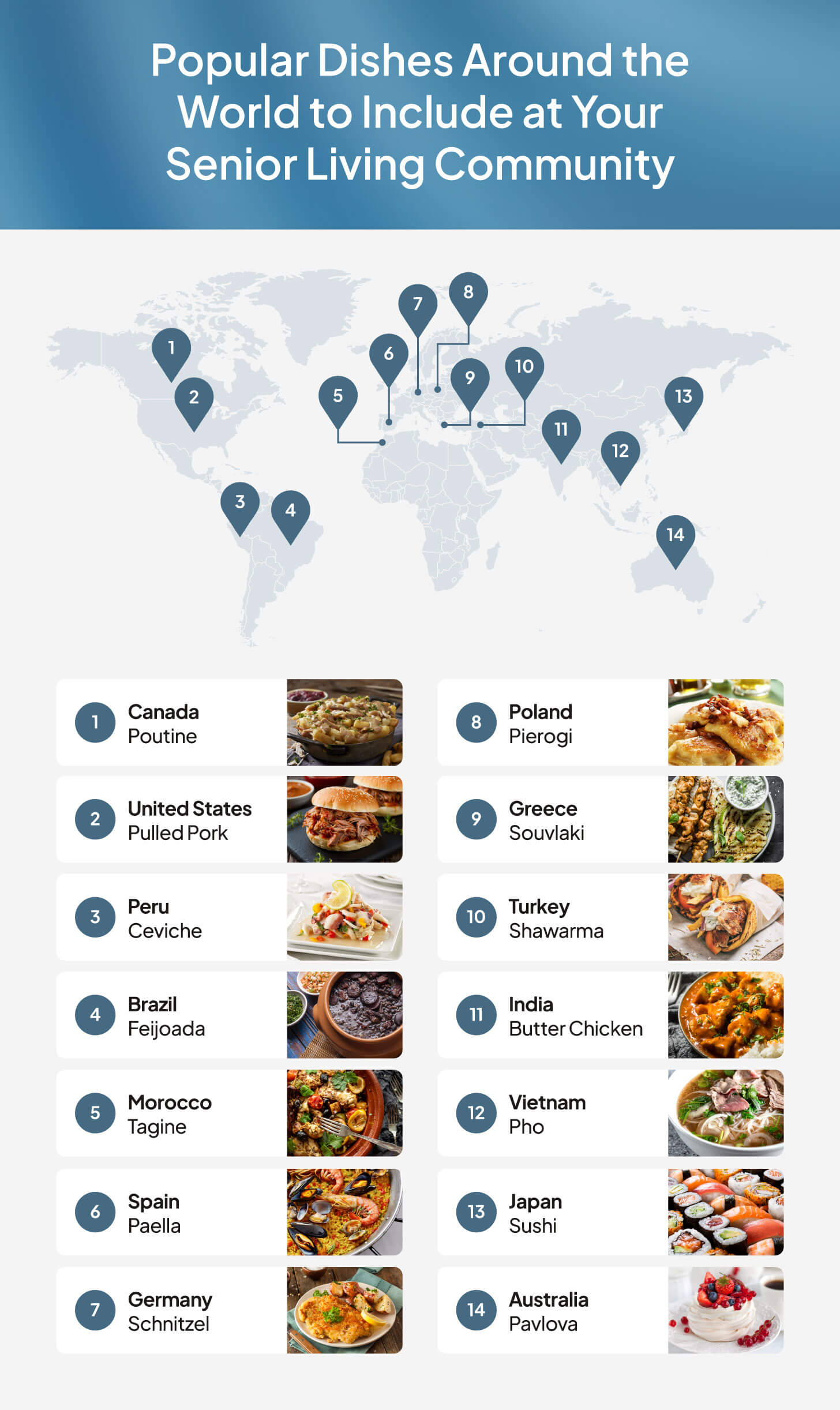11 Senior Living Dining Trends to Increase Efficiency and Engagement
See how emerging dining strategies help senior living communities streamline operations while fostering stronger connections with residents

See how emerging dining strategies help senior living communities streamline operations while fostering stronger connections with residents
Published on: August 22, 2025
Last updated: October 22, 2025

Contents
Dining in senior living is more than meal delivery — it’s a daily touchpoint that shapes satisfaction, wellness, and a community’s identity. Embracing senior living dining trends can streamline operations and reduce waste while lifting engagement. In fact, menu-planning technology at one multi-site community cut food costs by 12%, showing how efficiency and experience can rise together.
Taken together, these trends help teams deliver consistent quality, support staff with smarter workflows, and elevate hospitality in ways residents and families feel every day.

Digital menus and ordering put residents in control of their dining experience while giving teams the data they need to run efficiently. Residents can browse on tablets, kiosks, or personal devices; adjust font size and contrast; and review photos and nutrition details, supporting accessibility, independence, and dignity. The result is fewer misunderstandings, shorter wait times, and higher satisfaction.
When integrated with a POS, digital menus do even more. Dietary orders, allergies, and texture modifications are flagged at the point of selection; popular items and satisfaction trends are easier to spot; and inventory is updated in real time to support accurate forecasting and production. Orders route directly to the kitchen to reduce manual entry and errors, improve staff communication, and speed up service — all while operators gain clear insight for menu engineering and cost control.
Once digital menus are in place, mobile ordering extends convenience and choice. Residents can place orders from their rooms, activity spaces, or outdoor areas on their own schedule — no need to wait for dining-room hours or kiosks. Pickup and delivery windows, order notes, and saved favorites support accessibility, independence, and a smoother experience for residents and families.
Mobile preorders give kitchens a clearer view of upcoming demand to improve production planning, staffing, and tray-line throughput while reducing waste. Integrated with your POS, mobile orders carry forward dietary orders, allergies, and texture modifications; route to the right prep station; and update inventory in real time. Ultimately, this helps dining teams serve safely, communicate efficiently, and maintain tighter cost control.
Informed menu planning for senior living includes a data-driven approach to managing your community’s dining services and choosing menus based on your residents’ needs and preferences. Powered by data and insights gleaned from an interconnected technology platform, like Grove Menus by Aline, you can create menus that cater to specific tastes and nutrition for residents.
These menus help increase resident satisfaction, boosting your community’s reputation for care. With the technology in place for informed menu planning, community owners and operators will also experience enhanced efficiency, cost savings, and reduced revenue leakage from unused inventory.
Personal meal plans elevate the dining experience by tailoring menus to each resident’s clinical needs, cultural and religious practices, and individual tastes, not just accommodating restrictions. The aim is dignity and delight at every meal.
For example, one resident recovering from surgery may benefit from a high-protein, soft-texture plan while another prefers vegetarian meals without bell peppers. Meeting both sets of needs signals attentive, person-centered care.
Operationally, an interconnected platform centralizes diet orders, preferences, and allergens, and then pushes them to production sheets and the POS. Teams can menu-plan with precision, forecast portions accurately, and purchase to spec to reduce waste, safeguard residents, and manage food costs with confidence.
As preferences trend toward fresher, tastier, more sustainable food, locally sourced ingredients fit the moment. With shorter supply chains, communities get peak-season produce, fuller flavor, and better nutrient retention, and the transparency strengthens trust with residents and families.
Real partnerships are key here. Vet local farms and producers for food-safety certifications, set seasonal calendars, and establish standing orders for high-use items. Regular check-ins keep you aligned on quality and availability, so menus can rotate with the season and substitutions are planned, not last minute. Pair this with thoughtful purchasing and production planning to manage cost per portion and reduce waste.
Beyond the plate, these relationships signal your community’s commitment to the local economy and environment. Spotlight partner farms on menus, host seasonal tasting events, or feature “meet the producer” days. The result is a dining program that feels authentic and connected, appealing to residents who value community ties, nostalgic flavors, and sustainable living.
Accommodating specialized diets goes beyond personal meal plans; it tailors offerings to clinical needs and functional abilities while honoring cultural preferences and individual tastes. The goal is safe intake, dignity, and meals residents genuinely enjoy.
Consistent labeling, cross-contact controls, staff training, and clear handoffs from assessments to production are critical. By centralizing resident dietary profiles and routing them to production sheets and the POS, operators reduce risk, improve consistency, and control costs while ensuring meals align with individual needs.

Elevate senior living dining from “sustenance” to wellness-first by weaving nutrient-dense ingredients into everyday menus. The goal is great taste with measurable nutritional benefits that support vitality, digestion, cognitive function, and immunity—all while respecting individual diet orders and preferences.
Including these valuable foods in your menus shows your commitment to resident health and well-being, both of which are essential to boost resident satisfaction and serve as excellent marketing tools to continually attract new residents.
A comprehensive, all-day beverage program turns drinks from an afterthought into a daily highlight. Offer more than water, juice, and drip coffee to boost hydration, invite casual social time, and enrich the dining experience across dayparts.
Menu ideas
Execution tips
Offering residents expanded beverage packages is a strategic choice that can positively impact satisfaction and engagement. By providing more options, you can elevate your community’s dining experience.
Resident expectations have shifted. Where and how they dine matters as much as what’s on the plate. Communities are moving beyond a single dining room to offer options like casual cafés, bistros, grab-and-go markets, outdoor patios, and quiet nooks for small-group or solo meals.
The goal isn’t more rooms for their own sake — it’s meaningful choice. Different venues and service styles let residents match the setting to the moment, such as a quick bite after an activity, a sunny patio lunch with friends, or a quieter, white-tablecloth dinner.
For operators, multiple venues smooth the rush. Traffic spreads across spaces, peak times become manageable, and wait times drop. Day by day, demand signals from reservations, POS, and preorders guide targeted staffing and production while venue-specific menus keep execution tight and costs in check.
Transforming mealtime into a social event can elevate your community’s atmosphere and deepen resident connections. Rather than simply eating and leaving, residents linger, engage, and share meaningful moments together.
Social dining can be as simple as themed meals that bring different cultures to life through décor, music, activities, and authentic cuisine. Or, it can be more elaborate, like quarterly formal dinners around major holidays where residents dress up and enjoy a special evening. Whatever the format, focus on creating an inviting atmosphere that sparks conversation, laughter, and shared memories.
When residents have events to anticipate, it enriches their daily lives and boosts satisfaction. These occasions also energize staff — from brainstorming creative ideas to working as a team to bring them to life — fostering collaboration, pride, and a strong sense of community spirit.
Senior living dining is evolving beyond the traditional American menu toward a world of culinary diversity and restaurant-quality presentation. This shift isn’t just about the occasional ethnic theme night — it’s about weaving authentic global flavors into everyday menus, so residents experience variety, discovery, and delight on a regular basis.
When thinking internationally, go beyond the most common choices, like Italian, Mexican, or Chinese. Explore lesser-represented but equally flavorful traditions, including:
Offering authentic dishes from around the world not only enhances variety, but it also helps residents feel recognized, valued, and connected to their heritage or new cultural experiences. And the “upscale” side of this trend isn’t about extravagant spending. Thoughtful plating, fresh and high-quality ingredients, and attention to presentation can transform a meal into a special occasion. Even simple dishes become memorable when served with care, making residents feel both indulged and well cared for.

According to our 2025 Senior Living Benchmark Report, 39% of respondents shared that high-end amenities, including multiple dining choices, are important to them in a community.
With an interconnected technology system, like Grove Menus by Aline, you can seamlessly integrate the dining trends above into your daily operations while maintaining quality, controlling costs, and enhancing the resident experience.
Every recipe on Grove Menus is dietitian-approved and includes detailed nutritional information. This ensures you make informed, evidence-based menu decisions and maintain transparency with residents and families. Built-in substitutions give you flexibility to meet diverse dietary needs and preferences for every meal, helping your community stay compliant with regulations and committed to wellness.
Grove Menus helps you maintain food quality while keeping budgets in check. By calculating precise ingredient quantities, tracking inventory, and reducing spoilage, the platform minimizes waste and closes a common gap in dining profitability. The result: optimized spending without compromising flavor or variety.
Robust reporting turns raw data into actionable intelligence. Grove Menus offers clear visibility into metrics, like food cost per resident, per meal, and per day, empowering you to identify inefficiencies, improve procurement and staffing decisions, and forecast future needs with accuracy. These insights support smarter cost control and a healthier financial outlook for your dining operations.
When paired with your POS system, Grove Menus creates a fully connected and efficient dining ecosystem. Every order is tracked in real time, including substitutions, to capture valuable data on resident preferences, ordering patterns, and dietary restrictions. This integration helps staff minimize errors, boost compliance, and provide more personalized service.
An interconnected POS also automates billing, eliminates manual data entry, reduces administrative workload, and delivers accurate financial reporting. This leads to smoother operations from the kitchen to the front office, all while enhancing the dining experience for residents.
Pairing today’s most appealing senior living dining trends with the powerful capabilities of Grove Menus by Aline enables your community to run more efficiently, deliver exceptional dining experiences, and keep residents actively engaged. You’ll stay ahead of the curve while enhancing satisfaction for both residents and staff.
Let’s have a conversation about how Grove Menus by Aline can elevate the dining experience at your senior living community.


Amanda McGrory-Dixon
Amanda McGrory-Dixon is the content marketing manager at Aline, where she shares expert insights on how senior living communities can streamline operations, enhance resident satisfaction, and drive sustainable growth. With a deep understanding of industry trends and technology, she helps operators navigate challenges and implement data-driven strategies to improve efficiency, profitability, and care outcomes.
Blogs, stories and studies from the forefront of senior living operations

Lead generation surveys give senior living operators the data they need to understand their market, uncover new opportunities, and drive occupancy growth.

Prospect-centered selling helps senior living operators convert more leads and achieve occupancy goals through a more personalized, empathetic approach.

Gain insight into senior living pricing strategies for community success. Explore how Aline’s software optimizes revenue and operations

Overcome the biggest senior living financial challenges, including operational costs and occupancy rates, with interconnected software

Take a look at how senior living software options, like Aline, can elevate operations, resident care, and ROI

Enhance efficiency, accuracy, and resident satisfaction by integrating a POS system into your senior living dining operations
We’re using cookies on this site to improve your experience. Cookies help us learn how you interact with our website, and remember you when you come back so we can tailor it to your interests.
You can find out more about cookies and usage on our cookie policy page.
Some of these cookies are essential, while others help us to improve your experience by providing insights into how the site is being used.
For more detailed information on the cookies we use, please check our privacy policy
Your experience is important to us. We’re redirecting you to our new Aline website, where you’ll discover how our complete suite of senior living solutions can help you grow occupancy and revenue, optimize operations, and enhance resident care.
For more information, you’re welcome to read our statement on our merger. To continue your web experience, simply close this notification.
Your experience is important to us. We’re redirecting you to our new Aline website, where you’ll discover how our complete suite of senior living solutions can help you grow occupancy and revenue, optimize operations, and enhance resident care.
For more information, you’re welcome to read our statement on our merger. To continue your web experience, simply close this notification.
Your experience is important to us. We’re redirecting you to our new Aline website, where you’ll discover how our complete suite of senior living solutions can help you grow occupancy and revenue, optimize operations, and enhance resident care.
For more information, you’re welcome to read our statement on our merger. To continue your web experience, simply close this notification.
Your experience is important to us. We’re redirecting you to our new Aline website, where you’ll discover how our complete suite of senior living solutions can help you grow occupancy and revenue, optimize operations, and enhance resident care.
For more information, you’re welcome to read our statement on our merger. To continue your web experience, simply close this notification.
Aline Innovation Summit 2026: Registration Now Open!
Connect with senior living leaders, innovators, and industry peers May 11-13, 2026, in Frisco, TX to explore the latest innovations, proven strategies, and best practices shaping the future of senior living. View details and register today.